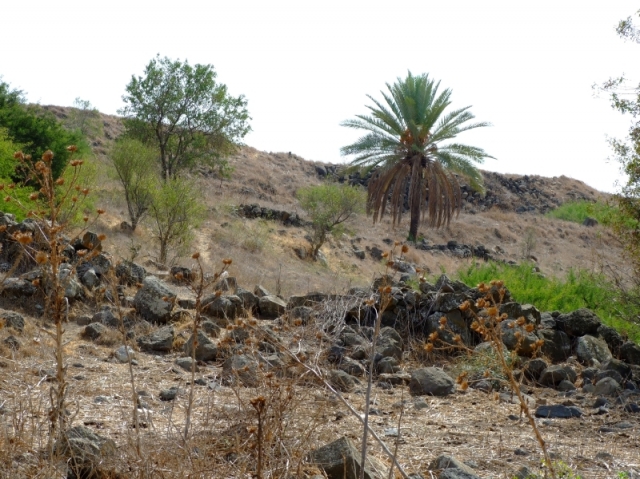Info
District: Tiberias
Population 1948: 840
Occupation date: 12/05/1948
Jewish settlements on village/town land before 1948: None
Jewish settlements on village/town land after 1948: None
Background:
‘Awlam before 1948
‘Awlam was located 15km from the city Tiberias on the slopes of the westward flowing Wadi ‘Awlam, facing northwest. It was linked to the highway leading to other villages and the city Tiberias by a secondary road.
‘Awlam was identified with the Roman city Oulamma, which was referred to as Heulem by the Crusaders. In the late nineteenth century, ‘Awlam was described as a village made from adobe bricks, situated on elevated ground. The houses had roofs made of timber and reeds and covered with a layer of mud. A small number of houses were built from stone and cement or concrete.
All of the villagers were Muslim, and in 1944-45 consisted of 720 inhabitants. The village had both a mosque and an elementary school founded in the Ottoman period, but closed during the British Mandate. The villagers had six springs they used for dirnking water and relied on agriculture and cattle breeding for their livelihood. They planted different types of grain, fruits and vegetables . 6,623 dunums were used for cereals and 202 were used for orchards or were irrigated.
Occupation and depopulation
According to Israeli military intelligence, the villagers were ordered to leave on the 6th of April, 1948 by the Arab Higher Committee, ostensibly out of fear that the villagers would support the Zionists. However, in the History of the Haganah this story is contested. They state that the Golani Brigade entered ‘Awlam on the 12th of May and that the villagers fled in fear. Within this operation, the lower Galilee was emptied of its Arab inhabitants. It is not clear what happened to the citizens following the occupation of the village.
Israeli Settlements on village lands
There are no Israeli settlements on the village land. The settlement of Kefar Qish lies 4.5km west of the village site on lands belonging to the village of Ma’dhar.
The village today
Today, the only remain left of the village is stone rubble. A spring that was used by the villagers is left unchanged, however the site has been transformed into cow pasture and cacti also grow on it. The lands are cultivated by the settlement of Kefar Qish.
------------------------------
Source: al-Khalidi, Walid (ed.). All that remains: the Palestinian villages occupied and depopulated by Israel in 1948. Washington DC: 1992.


